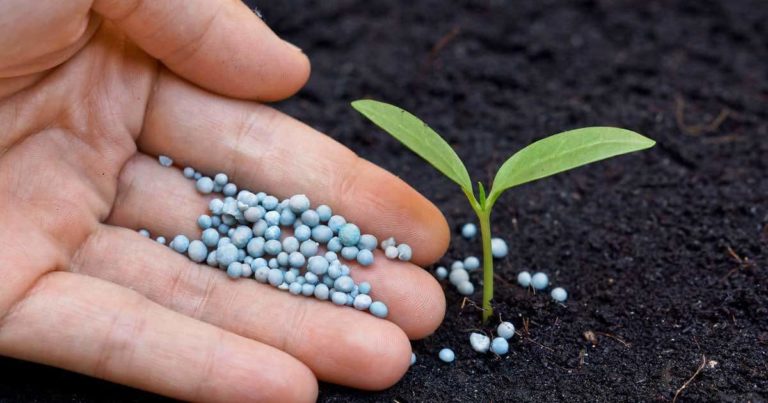Acidification due to inorganic nitrogen fertilizer addition benefits the calcareous soil (1/3rd of the world’s soil). According to the fertilizer industry, 1.8 kg CaCO3 has neutralizing power for 1 kg of nitrogen fertilizer (ammonia/ urea/ ammonium nitrate form). However, monocots uptake lesser amounts of cation than dicots resulting alkaline rhizosphere.
During nitrification (pH = 5.5 or more), NH4NO3 behaves like 2 molecules of HNO3. HNO3 is either absorbed by the plant roots in deeper soil or leached out, else it acidifies the soil. But, the surface 2 cm are highly acidified in low/ no-till condition. It can be minimized through surface liming or creating permeable soil at early no-till conditions. (NH4)2SO4 converts to HNO3 and H2SO4 (similar results in (NH4)3PO4). When the NO3– of KNO3 is absorbed by plants considerably, it results in to increase in soil pH. It concludes that acidification can be reduced when fertilizers are applied exactly as crop requirement. Similarly, legumes like alfalfa yielding 10 -12 MT/ha per year contribute acid equal to neutralizing power of 900 kg/ha of CaCO3 per year. Nitrogen is lost when crop residues are burnt. Residual bases decrease soil acidification.
Table 1. Theoretical and assumed equivalent acidity from various nitrogen-containing fertilizers
Kg CaCO3 required to neutralize acidity
| Source | per kg nitrogen | per 100 kg material | assumed per kg nitrogen* | assumed per 100 kg material* |
|---|---|---|---|---|
| (NH4)2SO4 | 7.2 | 150 | 5.3 | 110 |
| NH4NO3 | 3.6 | 120 | 1.8 | 59 |
| NH3 | 3.6 | 295 | 1.8 | 148 |
| Urea | 3.6 | 166 | 1.8 | 84 |
| (NH4)2HPO4 | 7.2 | 151 | 5.3 | 110 |
*Values used by fertilizer industry (Western Fertilizer Handbook, 1984)
Table 2. Hypothetical production of acidity for different crops assuming all nitrogen in a crop came from urea application in exact amount of fertilizer needed*
| Crop | Yield dry matter | Anions S+Cl+P+Si in CaCO3 equivalent | Cations K+Ca+Mg+Na in CaCO3 equivalent | Net acidity (C-A) | CaCO3 equivalent of acidity per 100 kg urea** |
|---|---|---|---|---|---|
| kg/ha | kg/ha | kg/ha | kg/ha | kg | |
| Monocot 1 | 4,000 | 106 | 177 | 71 | 40 |
| Monocot 2 | 6,000 | 159 | 329 | 170 | 59 |
| Rice*** | 10,000 | 1,150 | 548 | -610 | -112 |
| Dicot 1 | 6,000 | 126 | 616 | 490 | 120 |
| Dicot 2 | 4,000 | 114 | 288 | 174 | 100 |
* If all nitrogen in crop comes from exact amount of urea fertilizer after nitrogen is oxidized to HNO3 the OH- released by roots with NO3 – uptake will balance H+ remaining from the HNO3. Thus, nitrogen is not included with anions.
** Theoretical = 166; value of 84 is used by fertilizer industry. The mean for the five hypothetical crops is 42 with a standard deviation of 92 indicating extreme variability.
*** Vastly different if straw not removed. The special results for rice due to the concentration of silicon in straw.
Reference to original paper
Wallace, A. (1994). Soil acidification from use of too much fertilizer. Communications in Soil Science and Plant Analysis, 25(1-2), 87-92. DOI: 10.1080/00103629409369010








